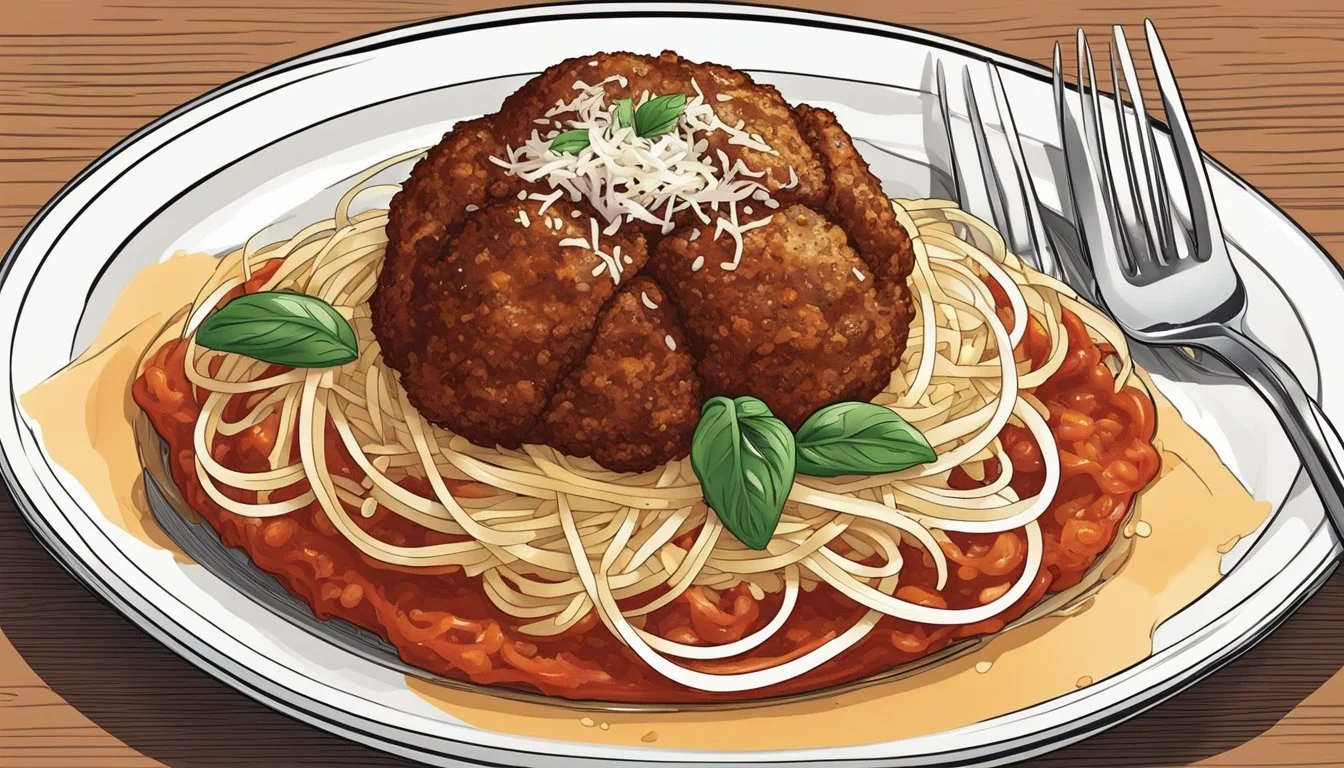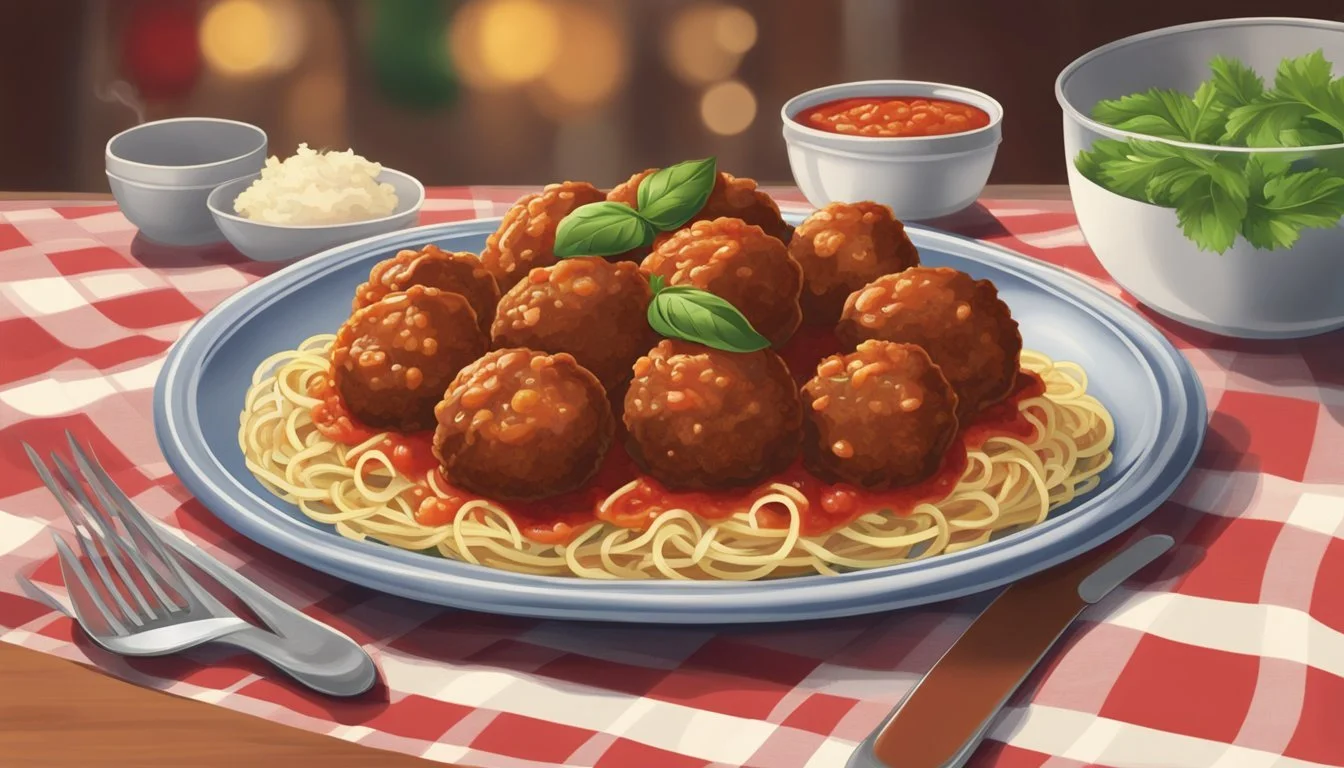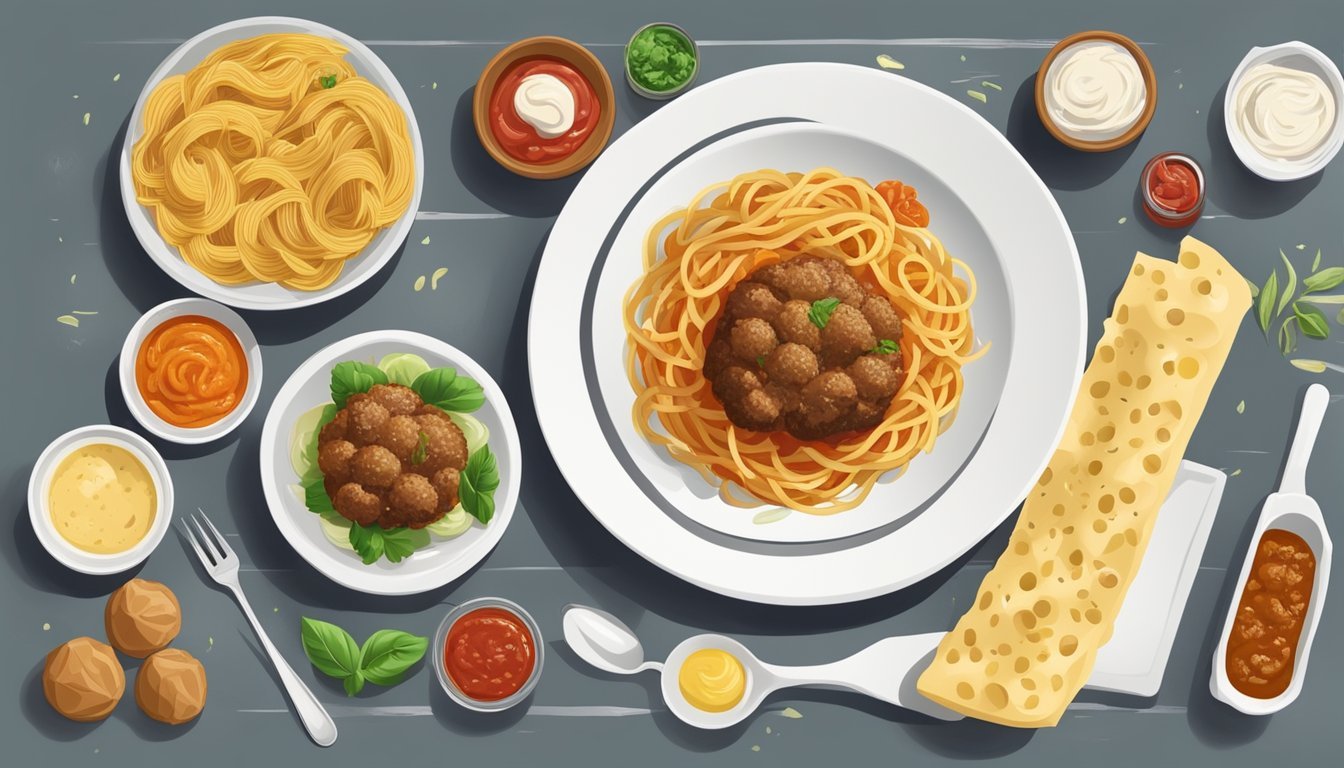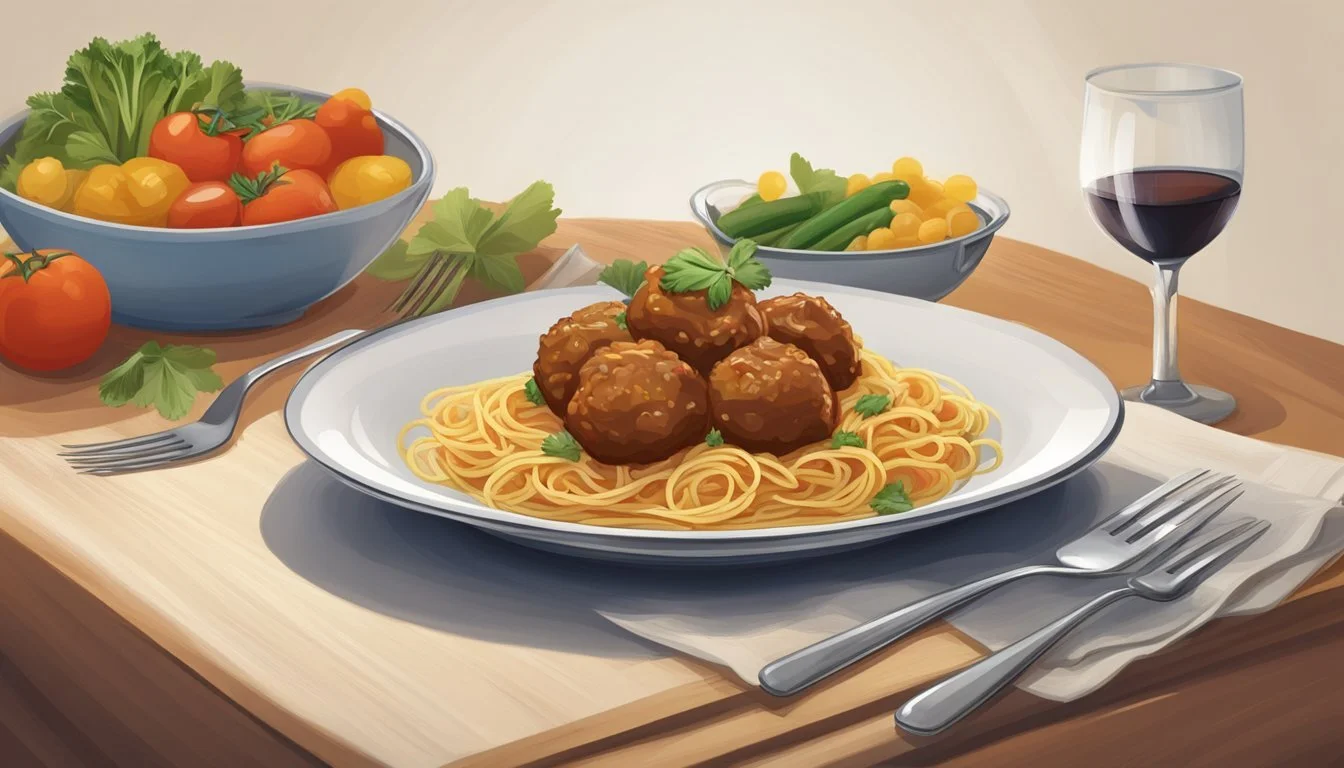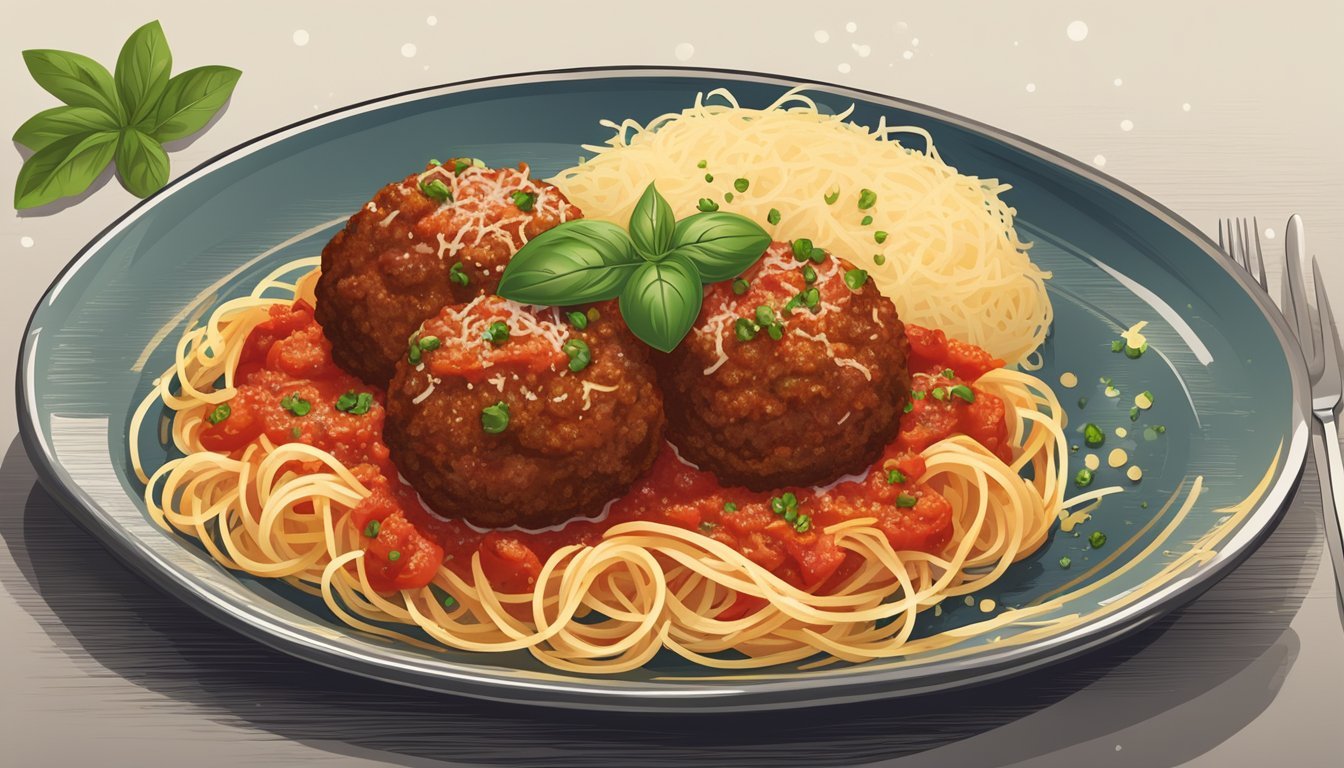How do you eat an Italian meatball?
Mastering the Art of Savoring This Classic Dish
Italian meatballs are a staple of classic Italian cuisine, often served as an appetizer, in pasta dishes, or even as a main course. These succulent round morsels are traditionally made from a mixture of ground meats such as beef, pork, or veal, combined with ingredients like garlic, eggs, cheese, and breadcrumbs. The components are expertly blended together before the meatballs are shaped by hand and cooked to perfection.
The preparation method varies, with some recipes calling for the meatballs to be pan-seared to achieve a crispy exterior before being simmered in a rich tomato sauce. Others may opt for baking, which can give the meatballs a uniformly browned exterior without the need for additional oil. Once cooked, Italian meatballs are incredibly versatile. They can be enjoyed on their own, drenched in marinara sauce, nestled atop a bed of soft spaghetti, or sandwiched in a crusty sub roll for a satisfying and delicious meal.
Origins and History
When one addresses the topic of Italian meatballs, it's essential to consider their deep-rooted culinary history and the consequent global influence. This section journeys back to the dish's origins and how it has been embraced and adapted across cultures.
Culinary Roots
The Italian meatball, or polpette, as it's traditionally termed in Italy, has ancient ties, dating back to the Roman Empire. Historical records suggest that Roman cookbooks featured recipes for isicia omentata, a type of meatball. Moving forward, meatballs remained a staple in medieval Italian cuisine. The quintessential Italian meatball as known today, however, differs significantly from its forebears. In Italy, meatballs are often crafted with an array of meats including beef, pork, lamb, or chicken, and are served as a main dish, rather than with pasta.
Global Influence
The transformation of Italian meatballs into a global culinary icon largely occurred through the spread of Italian culture by immigrants, particularly in the United States. The Italian-American adaptation, typically larger in size and served with spaghetti and tomato sauce, has become a standalone symbol of comfort food in American cuisine. While these adaptations are not considered authentic Italian meatballs, or polpette, they represent the evolution of Italian gastronomy as it intermingled with cultures worldwide.
Selecting Ingredients
Creating authentic Italian meatballs involves carefully selecting high-quality ingredients. Each element of the recipe contributes to the flavor and texture of the meatballs, so it's important to choose them wisely.
Meats
Traditionally, Italian meatballs use a combination of ground beef and ground pork for a balanced flavor and tenderness.
Ground Beef: Opt for a higher fat content, around 20% fat to 80% lean, for moist meatballs.
Ground Pork: Provides flavor and juiciness; aim for a blend similar in fat to the beef.
Bread and Fillers
Breadcrumbs and milk are essential for a light, tender texture.
Breadcrumbs: Fresh breadcrumbs or bread crumbs soaked in milk help bind the meatballs.
Whole Milk: Soaking the breadcrumbs in whole milk softens them and adds moisture to the meatballs.
Eggs: Serve as a binding agent to hold the meatball together during cooking.
Herbs and Seasonings
Fresh herbs (how long do fresh herbs last?) and seasonings are key to an authentic taste.
Salt and Black Pepper: Basic seasonings to enhance the natural flavors of the meat.
Garlic: Minced fresh garlic or garlic cloves infuse the meatballs with a classic Italian aroma.
Parmesan: Grated Parmesan cheese adds a sharp, salty flavor and improves texture.
Parsley: Fresh parsley should be finely chopped for a subtle herby freshness.
Selecting the right ingredients is the foundation for delicious, authentic Italian meatballs. Careful attention to the quality and balance of these ingredients will ensure your meatballs are a crowd-pleaser.
Preparing the Meatball Mixture
Creating the perfect meatball mixture is crucial for achieving tender and juicy meatballs. The meatball mixture should be handled with care and seasoned properly, blending a mix of ingredients such as fresh herbs, seasonings, and binders like egg yolks and breadcrumbs.
Mixing Techniques
To ensure a delicate yet flavorful meatball, one should begin with grated onion and breadcrumbs or soaked bread, which help create a moist base. Grated cheese, typically Parmesan or Pecorino Romano, adds depth of flavor. Fresh herbs like parsley, basil (how long does basil last?), and oregano impart an authentic Italian touch, while egg yolks act as a binding agent. It's essential to combine the ingredients gently to avoid dense meatballs; the mixture should be just combined but not overmixed.
Ingredients:
Grated onion
Breadcrumbs/Soaked bread
Grated cheese (Parmesan or Pecorino Romano)
Fresh herbs (parsley, basil, oregano)
Egg yolks
Technique:
Combine grated onion, soaked bread/breadcrumbs, and grated cheese.
Mix in finely chopped fresh herbs.
Gently fold in egg yolks until just combined.
Forming Meatballs
Once the meatball mixture is prepared, the focus shifts to forming the meatballs in a way that preserves their tenderness. Scoop a portion of the mixture, and roll it into a ball between the palms, taking care not to compact the mixture too tightly. A consistent size ensures even cooking. Forming meatballs roughly 2.5 inches in diameter is common, but the size may be adjusted according to the recipe or personal preference.
Forming Method:
Size: 2.5 inches in diameter (standard)
Technique: Light rolling to make balls without compacting
By adhering to these techniques and carefully combining the components, one will be well on their way to creating meatball mixtures that yield tender and juicy Italian meatballs.
Cooking Methods
Italian meatballs can be prepared using various cooking methods, each of which imparts distinct flavors and textures. Frying results in a crispy exterior, baking offers a uniform texture, and simmering in sauce infuses the meatballs with extra flavors.
Frying
In the frying method, meatballs are typically started in a skillet with olive oil. This technique creates a crispy, browned exterior while keeping the interior juicy. The chef must heat the oil over medium heat, then carefully place the meatballs into the skillet, turning them regularly to ensure they are evenly cooked.
Baking
Baking starts with preheating the oven which provides a healthier option by using less oil. Baked meatballs are placed on a wire rack set over a baking sheet often lined with parchment. Some prefer to lightly coat the meatballs with oil before baking to achieve a lightly browned surface.
Simmering in Sauce
The final method involves simmering meatballs directly in a flavorful tomato sauce or marinara sauce, which may include ingredients like onion, garlic, crushed tomatoes, and stock. This method allows the meatballs to absorb the sauce's flavor, resulting in a harmonious dish. Typically, after browning the meatballs, they are placed in a sauce with a touch of sugar to balance the acidity, and left to simmer until fully cooked.
Serving Italian Meatballs
Italian meatballs, or polpette, are a quintessential part of Italian cuisine renowned for their rich flavor and tender texture. They are traditionally savored with a variety of accompaniments and presented with thoughtful garnishes to enhance the dining experience.
Traditional Accompaniments
In Italy, meatballs (polpette) are often served alongside or on top of pasta dishes. Although spaghetti and meatballs is not an authentic Italian pairing, pasta like baked ziti is a common vehicle for meatballs in a traditional al forno (oven-baked) style. Sauces play a crucial role, with options ranging from a classic tomato sauce to a rich marinara. For a more authentic touch, homemade sauce that simmers with Italian seasoning, such as basil and parsley, is preferred. Hearty, crusty bread complements meatballs by serving as a vessel to soak up these savory sauces.
Pasta: Baked ziti, spaghetti
Sauces: Tomato sauce, marinara
Bread: Crusty Italian bread
Presentation and Garnishes
To make Italian meatballs an alluring dish, final touches matter significantly. A sprinkle of Parmigiano-Reggiano or parmesan cheese, freshly grated, adds a salty and umami depth to the meatballs. Drizzles of high-quality olive oil can contribute both flavor and a glossy visual appeal. Lastly, fresh herbs such as parsley or basil not only provide a burst of color but also a fresh contrast to the rich meatballs.
Cheese: Parmigiano-Reggiano (Parmesan), grated
Oil: Olive oil, drizzled
Herbs: Parsley, basil, finely chopped
Pairings and Variations
When one explores Italian meatballs, they uncover a wealth of pairings and variations that elevate this classic dish. Each pairing complements the meatballs in a unique way, while variations cater to different tastes and dietary preferences.
Sauce Pairings
Italian meatballs are versatile and can be enhanced by a variety of sauces. A classic marinara sauce is a staple that brings a bright, tomato-based acidity to balance the meatballs' savoriness. Alternatively, meatballs can be simmered in a creamy risotto, merging the textures of tender meat with velvety rice. For a heartier meal, one might opt for meatballs atop a mound of spaghetti, enrobed in a rich Bolognese that melds meats and tomatoes into a luscious fusion.
Marinara Sauce: Tangy and herby, ideal with homemade Italian meatballs.
Risotto: Creamy and comforting, perfect for complementing both beef and pork meatballs.
Spaghetti Bolognese: A robust choice, pairing well with ground beef meatballs (What wine goes well with beef meatballs?).
Meatball Variations
The traditional Italian meatball has been adapted into countless variations, each with its own distinct flavor profile. Ground beef meatballs are enjoyed for their deep, classic taste, while beef and pork combinations offer a richer, more complex flavor. For those seeking a delicate taste, ground veal meatballs present a lighter option. Italian meatballs can also contain surprises like raisins, adding a touch of sweetness to contrast the savory meat. Certain recipes call for Parmesan to be mixed into the meatball, infusing each bite with a salty, nutty essence.
Ground Beef Meatballs: A traditional base for robust flavor.
Beef and Pork Meatballs: For a fuller, more nuanced taste.
Ground Veal Meatballs: Lighter and more subtle in flavor.
Raisin-Infused Meatballs: Providing unexpected sweet notes.
Parmesan-Enriched Meatballs: Fortified with cheesy richness.
These variations can be served in different forms such as alongside noodles, in a meatball sub sandwich, or simply as standalone appetizers. The versatility of Italian meatballs makes them an enduring favorite in the culinary world.
Nutrition and Dietary Considerations
When considering the nutrition of Italian meatballs, they often contain a mix of ground beef and ground pork, providing a rich source of protein. However, these meats also add to the fat content, with the fat percentage varying depending on the meat quality and proportions used.
The content of olive oil can impact both the flavor and the fat content. Olive oil is favored for its monounsaturated fats, known for their heart-health benefits. Here's a general breakdown of the nutrition in meatballs:
Nutrient Approximate Amount in 6 Meatballs (85g) Calories 230-260 Fat High, depending on meat and cheese Protein Significant, primary from meats Carbohydrates Low, if bread crumbs are omitted
Italian meatballs often include Parmesan cheese, a flavorful addition that provides calcium but also adds to the sodium and fat content. Those with dietary restrictions, such as lactose intolerance, might need to modify traditional recipes or seek alternative cheese options.
Notably, traditional recipes may not be suitable for everyone, especially those with specific dietary concerns like high cholesterol, where the saturated fat from the meats and cheese should be monitored. Those with allergies or following a vegetarian or vegan diet should be aware that the classic Italian meatball recipe will not meet their dietary needs unless significant substitutions are made.
For health-conscious individuals, baked meatballs can offer a lower-fat alternative to frying in oil without sacrificing the traditional flavors. Similarly, choosing leaner meats or incorporating plant-based protein can adjust the fat and calorie intake to better fit personal dietary goals.
Preservation and Leftover Ideas
When it comes to Italian meatballs, proper storage and efficient use of leftovers can save time and reduce waste. Freezing offers a long-term solution, while reheating is a quick way to enjoy leftover meatballs while maintaining their flavor and texture.
Freezing
Italian meatballs freeze exceptionally well, making them an easy option for future meals. To freeze meatballs, one should first allow them to cool to room temperature. Once cooled, they can be placed in a single layer on a baking sheet to freeze individually, preventing them from sticking together. After they are solid, transfer the meatballs to a freezer-safe bag or container. They can be stored for up to 3-4 months.
For best results:
Label the container with the date of freezing.
Remove as much air as possible from freezer bags to avoid freezer burn.
Reheating
Reheating leftover meatballs is simple and can be done in a way that maintains their moistness and flavor. Meatballs can be reheated in a sauce on the stovetop over low heat, which can further infuse them with flavor and prevent drying out. Alternatively, they can be reheated in an oven set to 350°F (175°C) until they are heated through, approximately 20 minutes.
For microwaving:
Place meatballs in a microwave-safe dish.
Cover with a damp paper towel to keep them moist.
Reheat on high for 1-2 minutes or until hot.
Using these methods, one can ensure their Italian meatballs remain delicious long after their initial preparation.
Reader Engagement and Reviews
In this section, readers are encouraged to engage with the content by providing feedback and sharing their commentary on Italian meatballs. The focus is on gathering reviews that discuss the flavor and texture of the meatballs, as well as the overall satisfaction evident through ratings provided.
Request for Feedback
Readers who have tried the recipes are prompted to leave a review regarding their experience with the Italian meatballs. The feedback may include:
Ratings: On a scale from 1 to 5 stars, how would they rate the meatballs?
Flavor Profile: Were the meatballs rich and flavorful as expected from an authentic Italian recipe?
Texture: How did the texture measure up— were they pleasantly tender or fell short of expectations?
To facilitate this feedback, a simple table may be utilized:
Rating (1-5 Stars) Flavorful Texture Your Rating Here Yes/No Tender/Firm
Commentary
Apart from structured feedback, readers are invited to share their personal commentary on the meatballs. They might discuss:
Specific ingredients or techniques that worked particularly well for enhancing flavor or texture.
Creative twists on the traditional recipe that may have been incorporated.
Descriptive experiences of how the meatballs were enjoyed— perhaps during a family gathering or as part of a larger Italian feast.
Through engaging with the content in this manner, readers contribute to a rich understanding of Italian meatballs and how they appeal to a diverse array of palates.
Conclusion
Italian meatballs, known as polpette, are a staple in Italian cuisine, revered for their versatility and rich flavor. These savory orbs can be made in various sizes and commonly incorporate a mix of meats like beef, pork, and sometimes veal, seasoned with garlic, parsley, and cheese like parmesan or pecorino.
Traditionally, one finds polpette making a grand appearance in two main serving styles. Firstly, Polpette al Sugo involves simmering meatballs in a hearty tomato sauce until they are tantalizingly tender. This method is a Sunday favorite in many Italian households, pairing splendidly with pasta or enjoyed on their own.
Alternatively, Italian meatballs can be served as a stand-alone dish, without the cloak of tomato sauce. They are often baked and can be enjoyed as a second course, accompanied by a simple side salad or roast vegetables, bringing homemade warmth to the table.
When preparing homemade Italian meatballs, authenticity lies in the balance of ingredients and the method of cooking, ensuring a juicy, flavorful result. Whether simmered in sauce or savored solo, these meatballs are quintessentially Italian - rustic, comforting, and delectably satisfying. They serve as an iconic representation of Italy's affection for simple yet sublime home cooking.


